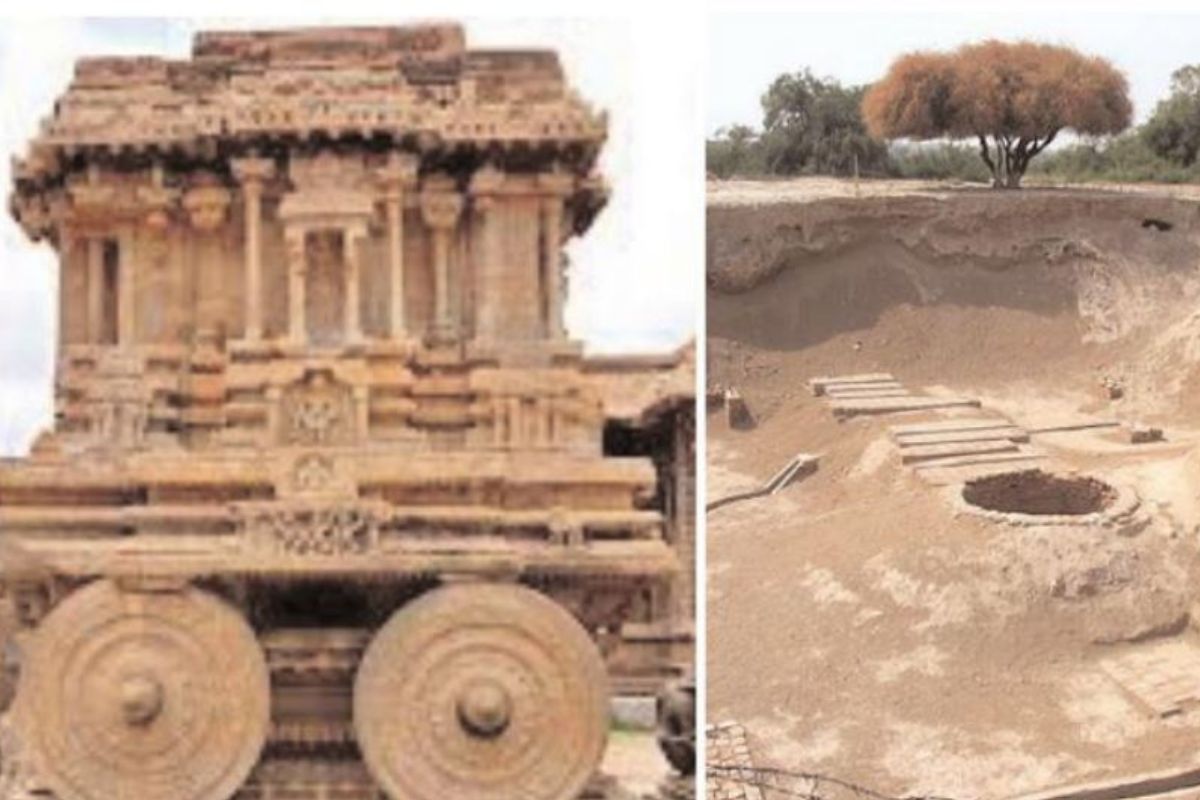The recent decision of the Government of Haryana to promote tourism at the archaeological site of Rakhigarhi (Hisar) by encouraging homestays and creating a museum of the Harappan Civilization is indeed laudable. But why call it Harappan? On the basis of available contemporaneous, scientific, geographic and historical evidence and in all logic it should be known as the Sarasvati Civilization.
River valleys over the centuries have cradled and nurtured some famous civilizations. For obvious reasons the pattern has continued as even now large cities continue to flourish along riverbanks.
The Egyptian civilization on the Nile and the Mesopotamian on the banks of rivers Tigris and Euphrates are known to have been the oldest. Excavations done by Sir Mortimer Wheeler during the earlier part of the last century added the Indus valley to this list.
It may come as a surprise that some of the Harappan sites came to notice only after the discovery that some contractors had pillaged them for brick ballast to build a portion of the Lahore railway.
Thus, the Indus Valley Civilization came to light accidentally about a hundred years ago while river Sarasvati, now extinct, finds extensive mention in our scriptures of over 5000 years.
Whereas the Indus Valley or the Harappan scripts are yet to be completely deciphered, at the same time we have the Skanda Purana mentioning that Mahadesh Kanyakubja of Bhoja, comprising thousands of villages had extended up to Kurukshetra and Sarasvati.
Similarly, Rig Veda makes at least 70 references to the river Sarasvati. Sapt Sindhu does find a mention in the Vedas but the overwhelming number of references to Sarasvati is a clear indication of the fact that it had a special place in our Vedas.
Though Mohenjo-Daro and Harappa were along the rivers Indus and Ravi respectively, both now in Pakistan, the maximum number of sites belonging to that period have been located closer home and along the satellite-determined course of a mighty river which would have existed around five millennia ago. This had to be a perennial river with a heavy flow of water necessitating a wide channel.
The Sarasvati might have been a myth for some, but satellite imagery analyzed by Yash Pal and others clearly show that a river system with a very wide basin right up to the Rann of Kutch did exist. These studies also concluded that the GhaggarSarasvati was a pre-Harappan river system with indications of habitation all along its channel. The perennial nature of the river has also been explained.
There is sufficient satellite data to show that the original course of river Sutlej was to follow a southward flow from Ropar towards Ghaggar-Sarasvati.
But there is an unusually sharp bend in the river at Ropar which gives it a westerly flow. Such an unusual change is possible only due to some tectonic event which ultimately led to a loss of its perennial source of water. This tectonic event also impacted the other river in the area, Paleo Yamuna, which according to B B Lal, also changed its course towards Ganga, giving rise to the belief that Yamuna and Sarasvati had been together. Rakhigarhi, also known as Rakhishahpur, discovered by the archaeologist Suraj Bhan in 1964, used to be on the banks of river Drishadvati, which was just an offshoot and a tributary of Sarasvati joining the mainstream of the river at a place after Sairishka, present Sirsa.
Further downstream after disappearing, this dry bed reappears in the far southwest, where it is identified not as Sarasvati but as the Mihran Hakra system meeting the Arabian Sea near Kutch. The area between Sarasvati and Drishadvati used to be known as Brahmavarta, the home of Vedic rishis. Some of the main cities of the Sarasvati era were Kapisthala (Kaithal), Soneprastha or Sonepat, Paniyaprastha or Panipat and Pehowa or Prithudaka.
Rakhigarhi, spread out over 80 hectares, is known to have been almost as big a city as Harappa and next only to Mohenjo-Daro. There is extensive use of baked bricks in the construction.
The baked bricks have also been used for fire altars resembling the traditional place for performing Agnihotra. Similar fire altars have been found in Kalibangan.
According to Possehl, there are some signs in the nature of graffiti on the bricks which have to resemble the seals found in the Indus Valley. The drainage system appears to follow a well-laid-out plan. Amongst the finds at the site are some amulets of terracotta besides some metallic objects of copper, bronze, gold and silver.
Thus, we have a situation where the connection between the settlements along the Sarasvati with those along the Indus is clearly made out but the reasons for their extinction and the respective timelines appear to be quite different.
It is widely believed that extensive flooding of the Indus River systems may have been responsible for some of those sites going under. On the other hand, the settlements in the Sarasvati valley became extinct due to the sources of water either drying up or changing course. Understandably, the debate on some of these issues may continue but the foundations and the development of the Vedas, Puranas and other scriptures having taken place in the areas around Sarasvati is established beyond doubt.












